Brick aprons
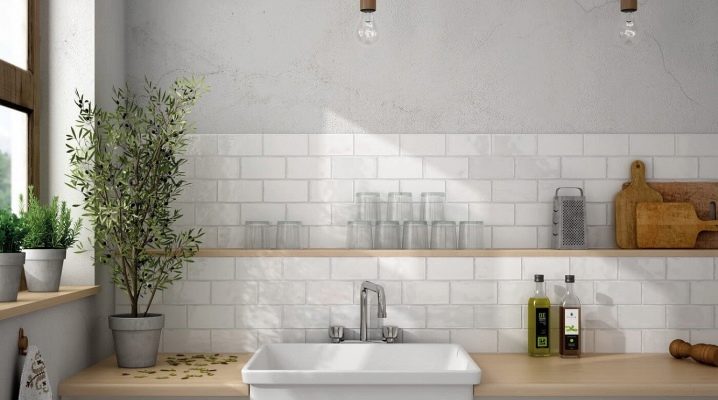
Today, when decorating a kitchen, brick aprons are very popular. This option has found its place in various design directions. Unattractive at first glance, brick helps to create an incomparable atmosphere in any kitchen.
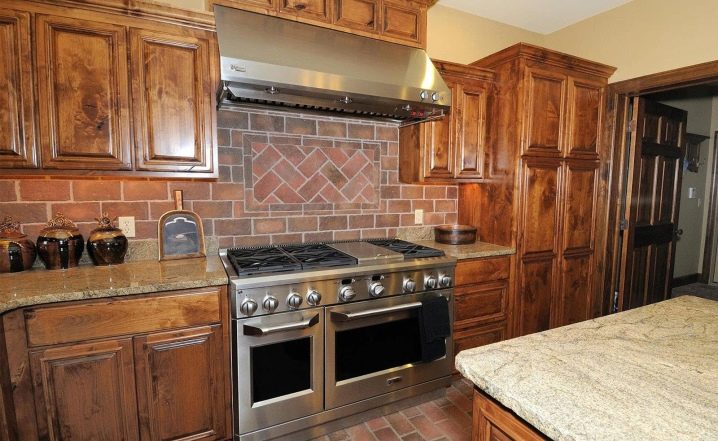
Advantages and disadvantages
Kitchen apron with imitation brickwork has a number of undeniable advantages:
- excellent indicators of moisture resistance and strength ensure the durability of the apron;
- resistance to high temperatures, which is extremely important, because the kitchen apron is located above the stove;
- brutal and rough design will colorfully fit into any kitchen and emphasize other interior elements;
- decorative brick will hide minor flaws in the walls and visually expand the space.
The disadvantages of decorative bricks include the fragility of tiles and the need for additional surface protection.
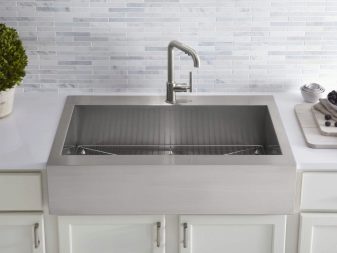
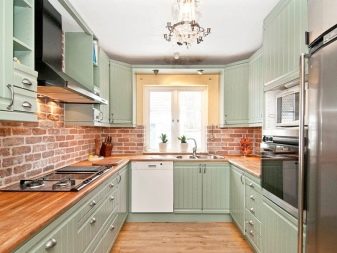


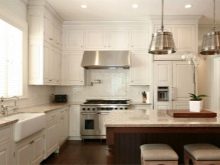

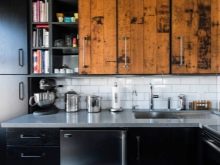
Materials (edit)
There are a large number of materials for imitation of brickwork - MDF, fiberboard, ceramic, gypsum, clinker, unglazed Tuscan, polymer-cement tiles, washable wallpaper, etc. Let's consider some of the most popular options.
- Ceramic tile completely repeats the geometric proportions of the brick, except, of course, the thickness. It has a number of advantages, such as price-quality ratio, resistance to mechanical damage, aggressive chemical environments, durability, a variety of colors and textures.
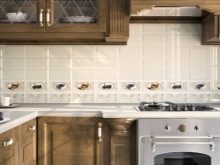
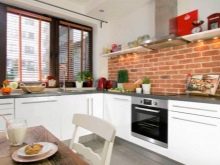
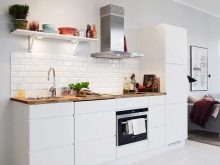
- Unglazed Tuscan Tile very similar in texture and color to the old red brick. It is great for a loft-style kitchen apron, has a relatively low weight and low porosity, and is unpretentious in maintenance. This tile is laid in the same way as an ordinary one - on a special glue. The only drawback of this material is its high cost.
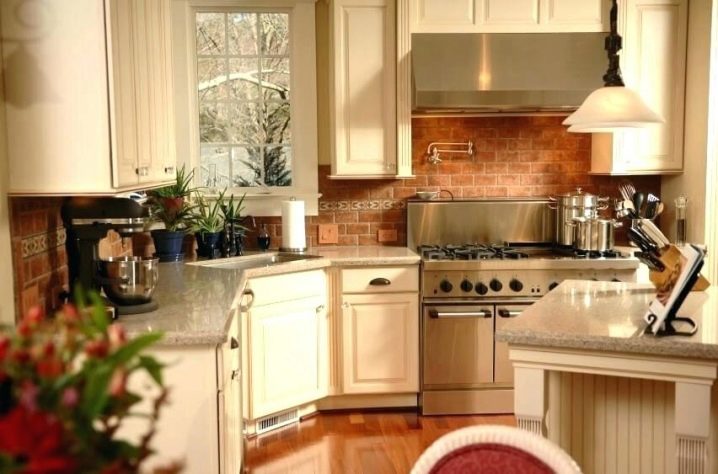
- Gypsum tiles - the most budgetary option for making a kitchen apron with imitation of brickwork. Gypsum tiles have only one significant drawback - they are not moisture resistant and are capable of collapsing under the influence of steam and moisture. To level this drawback, it is necessary to treat it with a special silicone mixture before facing, and after installation, open it with a protective varnish, after which it will serve you faithfully for a long time. For the rest, it is very simple to lay, it can be easily trimmed with a hacksaw or a construction knife, which makes it possible to join the corners when facing.
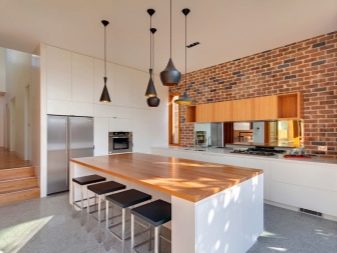
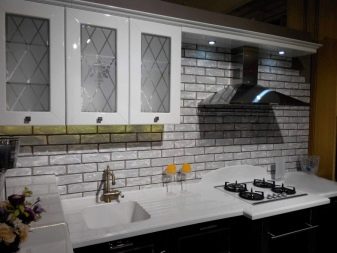
- Clinker tiles is most popular due to its similarity to real bricks. It has the same dimensions and texture, its thickness is no more than 20 mm, in combination with its low weight, it becomes an ideal option for imitating brickwork. When using clinker tiles for a kitchen backsplash, it is recommended to open them with a protective acrylic varnish, it can be glossy or matte with the effect of wet walls.
This will protect the tiles from exposure to high temperatures, vapors, and also make it possible to easily clean the surface with a damp cloth or using detergents.
Clinker tiles are the most durable type of decorative bricks, so they are quite expensive.
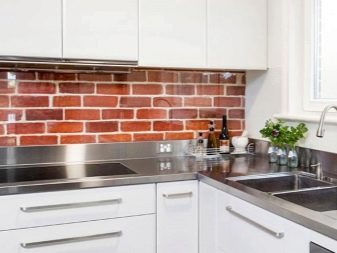

- Polymer cement Is a material based on cement with the addition of a polymer binder and coarse river sand.In terms of properties, it is almost identical to clinker, has high strength, low porosity and good moisture resistance. Perfect for cladding kitchen surfaces and apron as well. Most of the material is offered in white, if necessary, painted with acrylic paints. It can have an embossed or smooth surface.
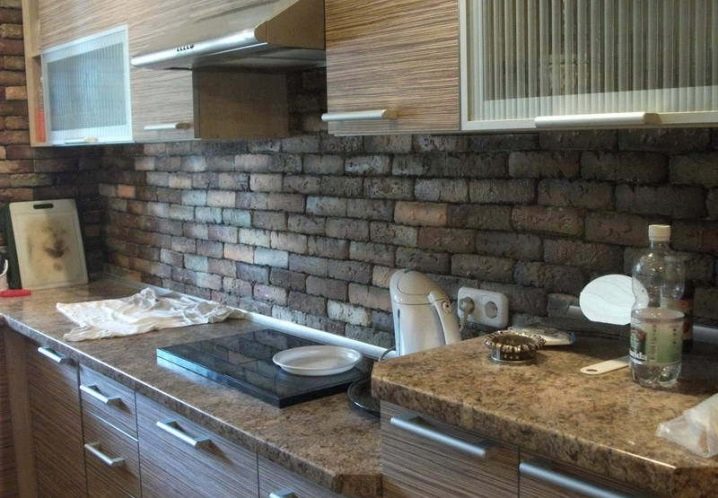
Styles
And now let's talk about the various stylistic options for decorating a kitchen apron for a brick.
- For design decoration loft style red brick is suitable, because the direction is based on imitation of old housing of the 30s of the twentieth century - the era of industrialization. Clinker, polymer-cement or unglazed Tuscan tiles are suitable here. They have a distinct texture and are great for imitating old bricks.
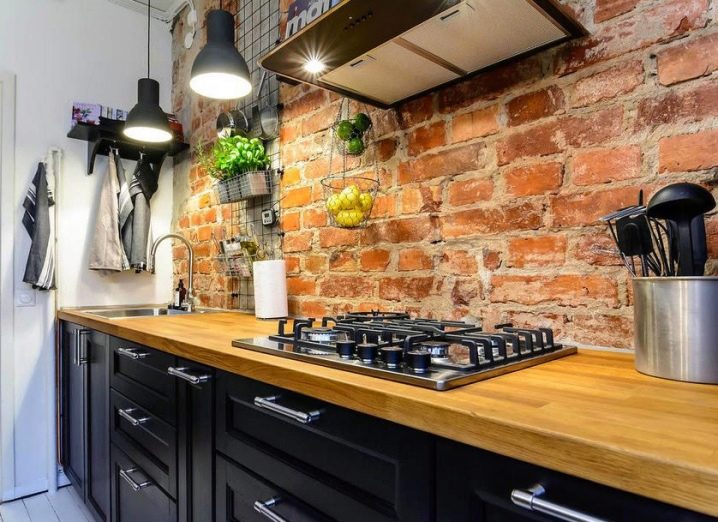
- For delicate provence white decorative brick-like tiles made of clinker, gypsum and polymer cement are the best fit. It can be left in its native white color or painted in any of the light pastel colors. The seams must also be rubbed in pastel colors to preserve the canons of style. Decorative brick for Provence style can have an antiquity effect, chips, scuffs and small cracks.
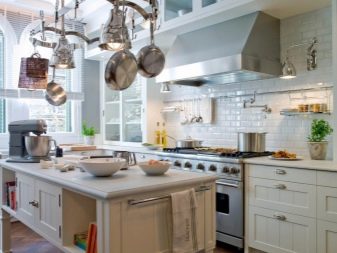
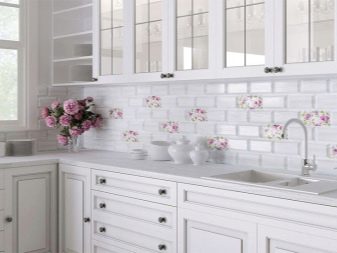
- Art Nouveau style kitchen aprons made of decorative bricks are also inherent. But here it is necessary to use bright, glossy materials; ceramic tiles or polymer cement of bright, saturated shades opened with glossy varnish are best suited. White tones are suitable for grouting.
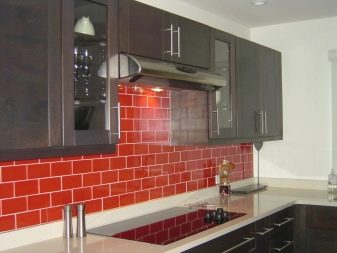
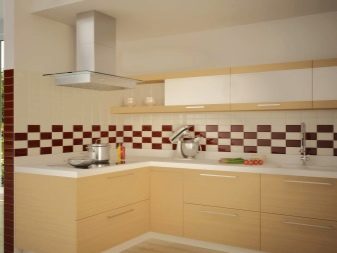
Design features in white
White decorative brick not only gives great freedom in choosing the shade of the kitchen backsplash, but also requires some additional operations to protect it and preserve its aesthetic appearance. The advantage of white decorative brick is the ability to paint it in the desired shade and give it an aging effect using translucent acrylic dyes, through which the white texture of the tile appears randomly.
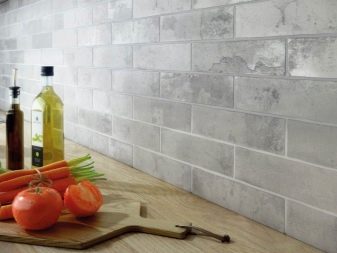
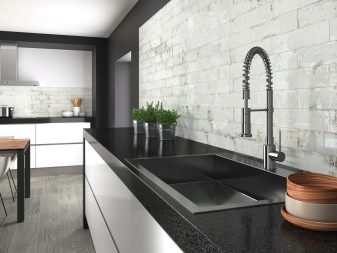
Opening white decorative bricks with a special varnish will provide reliable protection against dust, moisture and grease that are present in the kitchen; all dirt will be removed from the varnished surface without any difficulty. Protective varnishes are presented in a huge assortment and allow you to give the decorative material various visual effects - glossy or matte surface, imitation of wet stone, etc.
They contain natural wax, it perfectly protects the surface from dust and grease build-up.
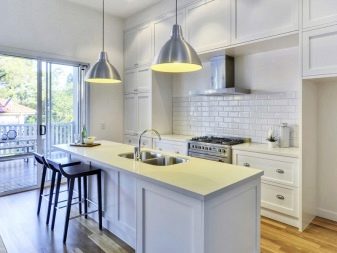
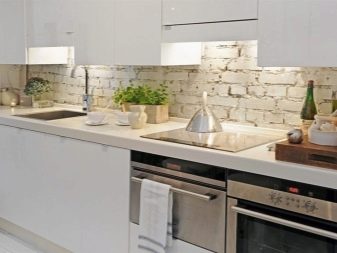
Since white decorative bricks are usually not used as the main wall covering, after facing the kitchen backsplash, you can arrange the window opening with the remaining tiles or lay out several accent elements on the walls. You get the effect of collapsed plaster with exposed bricks.

Masonry options
There are two ways to design an imitation brick backsplash.
- With seam - observance of a certain gap between the tiles, followed by grouting of these joints. The method is quite laborious and requires a certain skill. The main disadvantage of this method is the difficulty in subsequent cleaning: dust and grease get into the seams, which will then be problematic to remove from there.
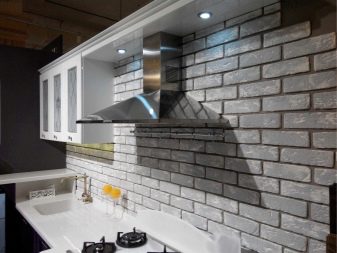
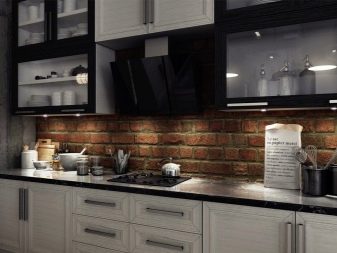
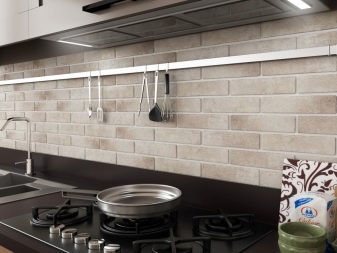
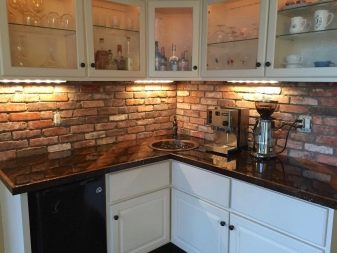
- Seamless - laying tiles close to each other, faster and easier option. From a practical point of view, this method has indisputable advantages - ease of maintenance of the apron, cost-effectiveness (there is no need to purchase grout for joints), the possibility of non-observance of symmetry when facing (the effect of "subsidence" of brickwork in old buildings is relevant for the Provence style).

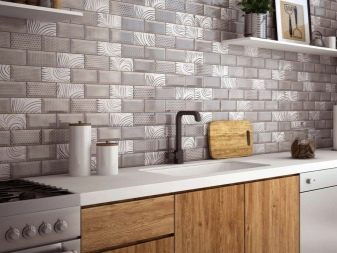
Imitation brickwork is still very popular when choosing kitchen backsplash design options. Correctly selected materials and colors will allow you to beat even the most boring interior in a stylish and modern way.
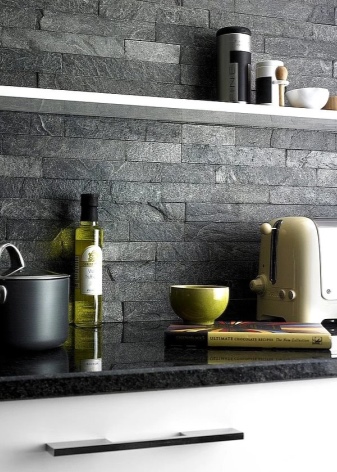
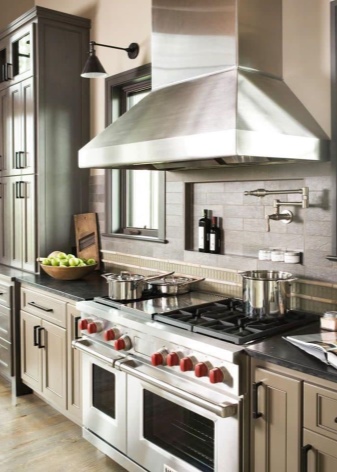
The following video clearly demonstrates how you can simply and quickly lay out a kitchen apron under a brick with your own hands.













The comment was sent successfully.